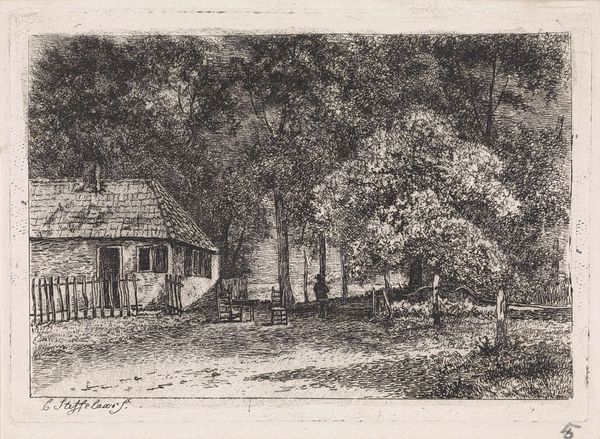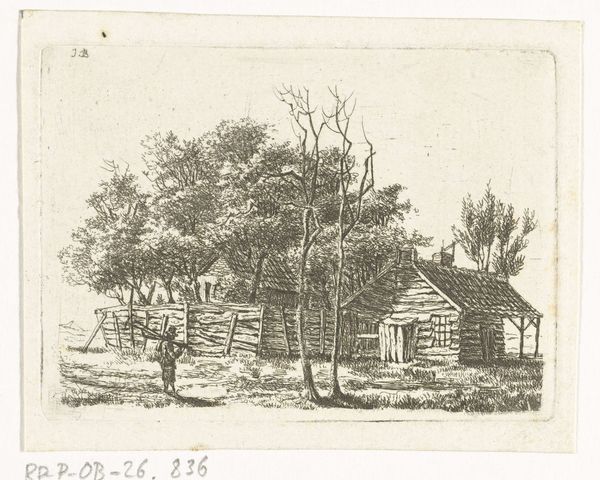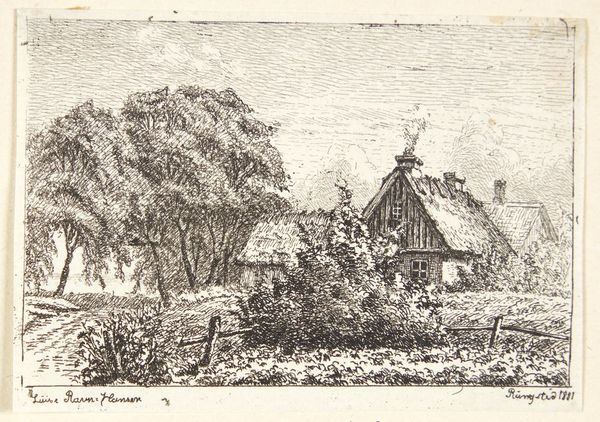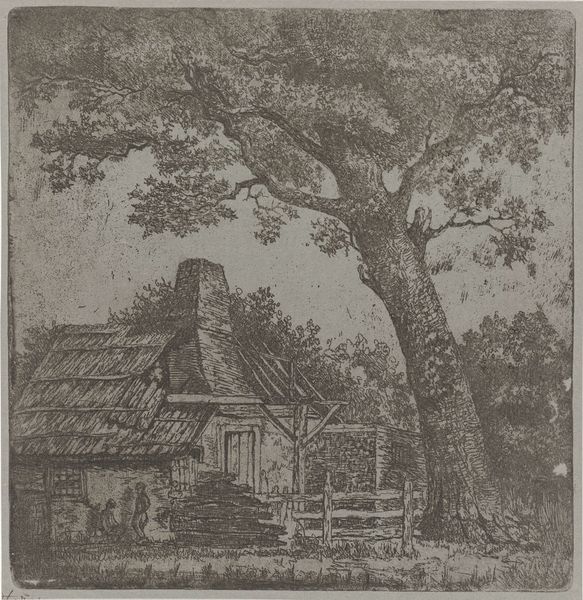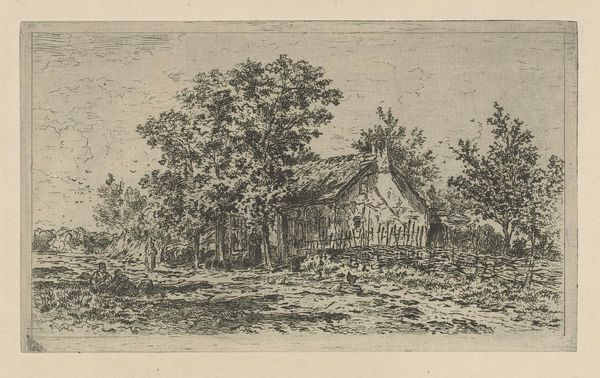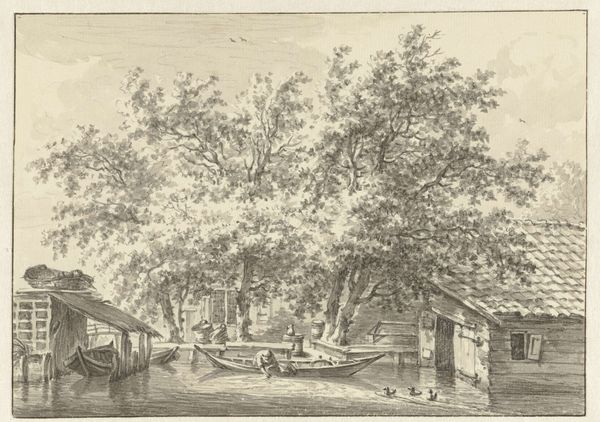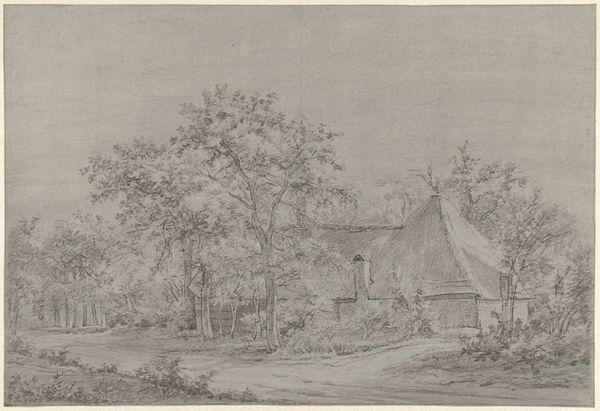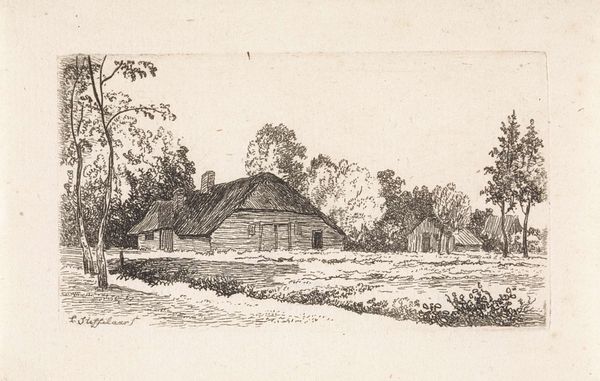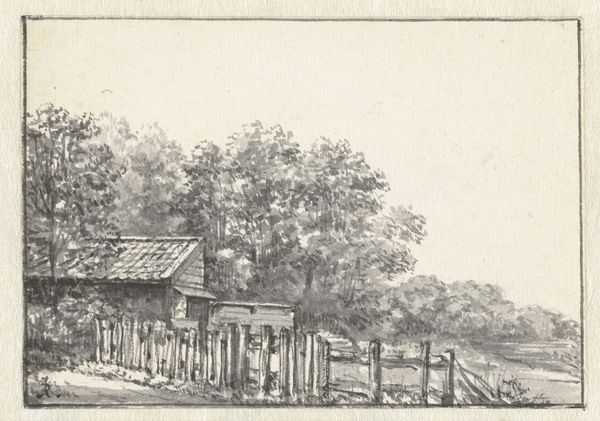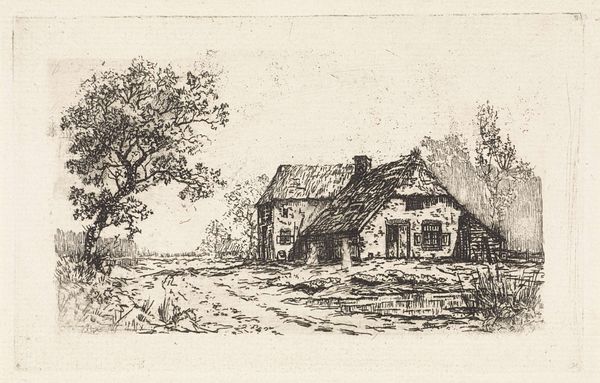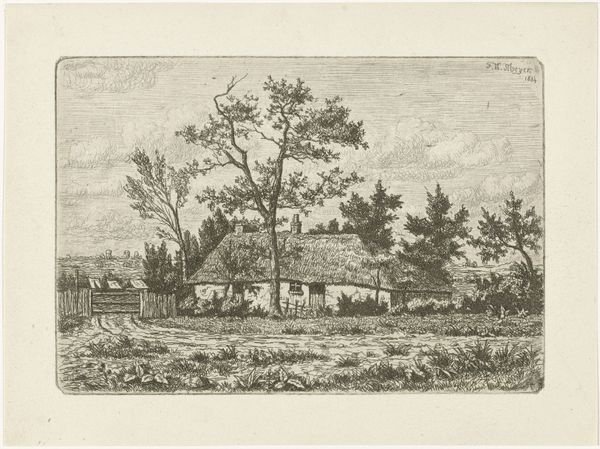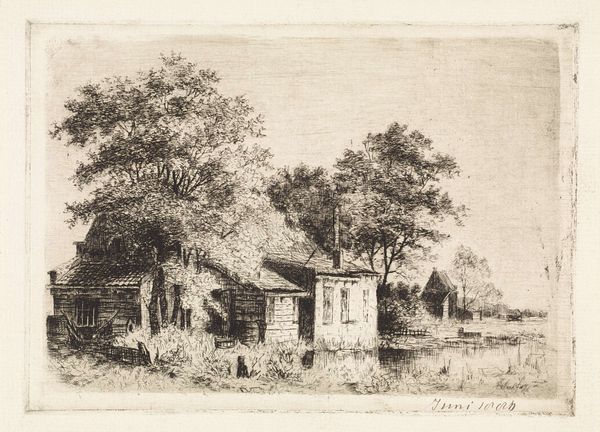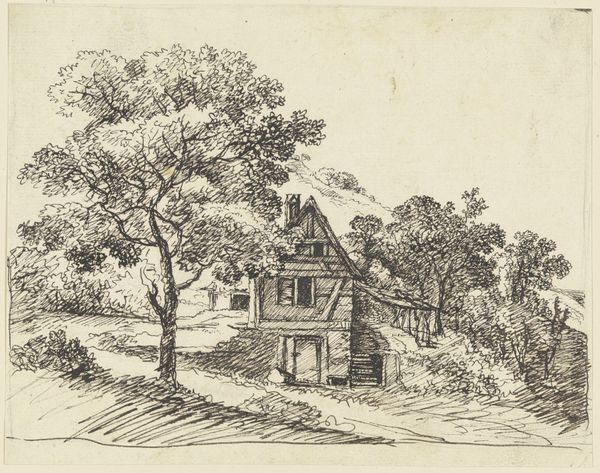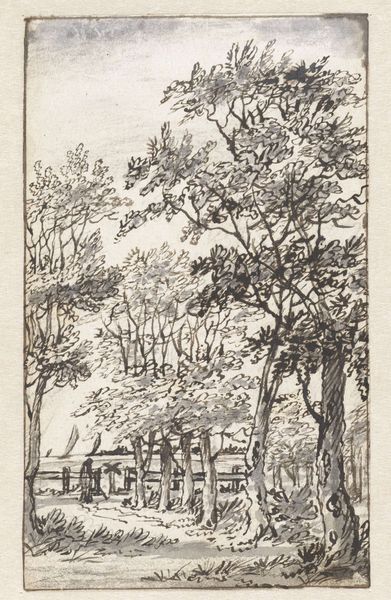
drawing, etching, ink
#
drawing
#
etching
#
landscape
#
etching
#
ink
#
genre-painting
Dimensions: height 91 mm, width 130 mm
Copyright: Rijks Museum: Open Domain
Curator: What strikes me most is the texture, the clear effect of the ink on the paper, lending a kind of quiet hum to the scene. Editor: Indeed. Today, we're observing "Huis tussen geboomte," or "House Among Trees" created sometime between 1807 and 1861, by Cornelis Steffelaar. It is executed using etching and ink. The composition presents us with a genre painting of a rural building embraced by lush trees. Curator: So, when looking at this work, I immediately zoom in on its materiality, asking how this etching—this reproduction—circulated and functioned. How was the image received and consumed by the wider public of its time? The work has an almost rustic simplicity in its directness of process. Editor: That’s an interesting angle. This piece also allows us to consider the role landscape imagery played in constructing ideas about Dutch identity during that period. The details of the house – modest, but sturdy – and its integration into nature evoke a certain kind of national pride connected to the land and its people. Curator: Precisely! And note how Steffelaar skillfully handles the etching process itself; creating variations of tone that suggest textures like wood and leaves with what seems like a rather simple set of processes. Was this art aimed at those involved in artistic processes themselves? And if so, how were their perceptions influenced by its techniques and subjects? Editor: Perhaps also relevant here is how genre scenes such as these fit into the larger socio-political context. The emerging middle class and the burgeoning art market helped propel its prominence in those decades, making this piece itself into a kind of quiet commentary on the values of labor, simplicity, and a connection to the land that might have held appeal across societal ranks. Curator: Well, thinking through Steffelaar’s labor, technique, and his possible position as a craftsman, what kind of message was conveyed with these carefully wrought materials and images? It creates a sense of immediacy with rural living. Editor: So, looking closely here reveals much more than just an innocent view. This image and the processes and values it represents are embedded within a network of social and historical narratives, giving it its real weight, you might say. Curator: Exactly. When assessing Steffelaar's image now we must then, perhaps, see both process and content— intertwined together— and consider not just 'what' is pictured, but equally how this piece came into being. Editor: I completely agree. It makes you see just how active the role is in shaping how this art gets to be seen and appreciated by its intended audience then.
Comments
No comments
Be the first to comment and join the conversation on the ultimate creative platform.
